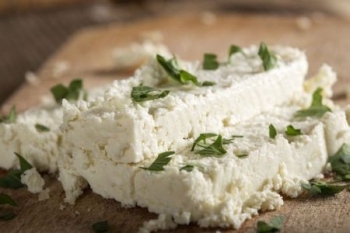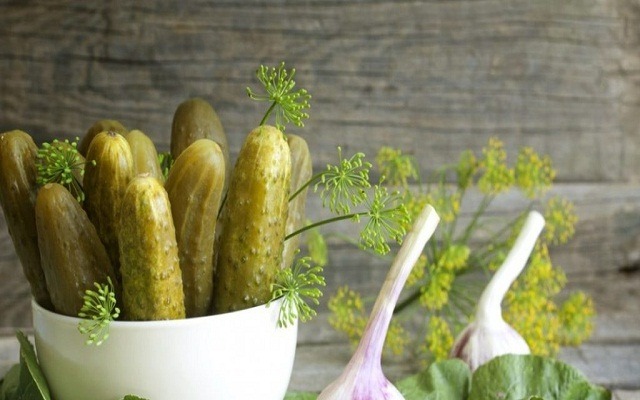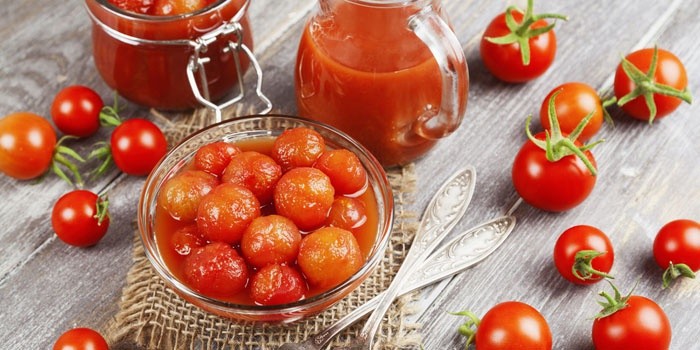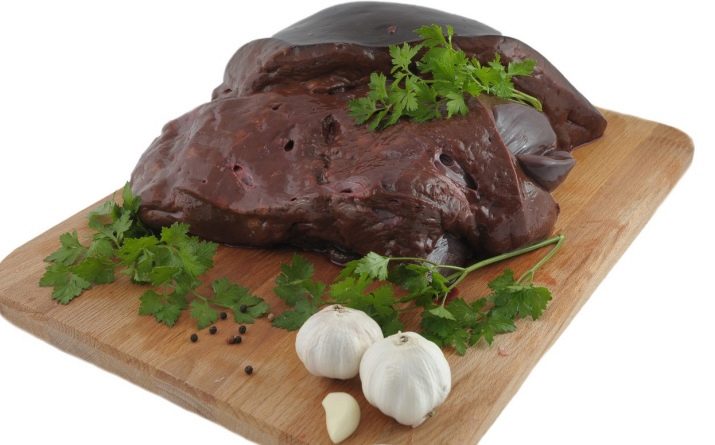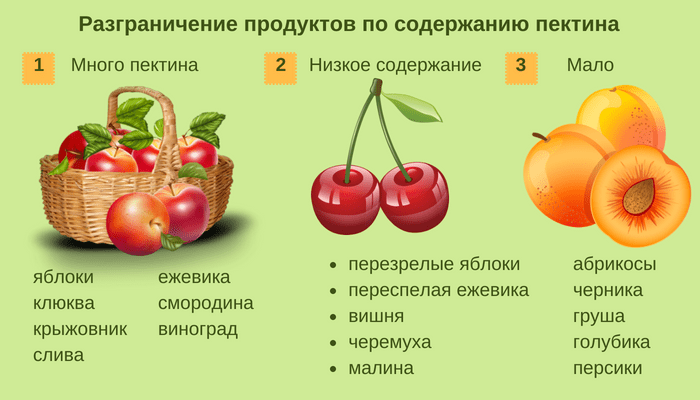How to keep greens in the refrigerator to stay fresh: a description of the methods. Secret tricks: how to store greens
Dill, parsley, spinach, basil, cilantro - not the whole list of unusually useful leafy vegetables. Not everyone knows how to store greens so that it does not wilt soon. To make full use of the storehouse of vitamins and minerals, you need to know about the intricacies of saving sorrel, watercress, tarragon, etc. In which containers it is better to place the plants, how to store greens in the refrigerator and in other places, we will tell in our article.
Features of storing greens
Greens has one big drawback. Fragrant bunches of mint, parsley, dill spoil quickly, unless suitable conditions are created for them. The following factors affect the leaf freshness most negatively:
- Oxygen. For cut stems, it does not bear any benefit, on the contrary - storage in the open air leads to accelerated twisting and darkening of the leaves.
- Direct sunlight. If you bought greens, already on the road from the market, try to minimize the exposure of the sun to fresh leaves. Natural light acts destructively on the green shoots of delicate plants (cilantro, parsley, spinach) and leads to their accelerated yellowing.
- High or low humidity. In a too humid environment, greens quickly decay, and in dry water it quickly evaporates from plants, which leads to wilting.
Given the influence of these factors, you can keep the greens fresh and fragrant for a long time.

A refrigerator is considered the best place to store herbs, but most herbs can be saved and at room temperaturewithout freezing or cooling. But under such conditions, the expiration date will be no more than 3-4 days. First you should free the bundles from store packaging. If the greenery is torn from its own garden, it needs to be sorted out, cleaned of roots and lower leaves, shake off the rest of the earth. Remember that you must not wash herbs that you plan to store.
Be sure to sort the greens by type and wrap each bunch in a piece of natural fabric or parchment. Put the finished packages in the kitchen cabinet. An exception to the rule is the storage of mint and basil. These herbs stand perfectly in a deep glass jar 2-3 cm filled with water. Store such a “bouquet” on the kitchen table, avoiding direct sunlight. Do not forget to change the water daily and cut the lower stems.

Storage in the refrigerator and freezer: what you need to know
How to keep greens in the fridgeto stay fresh is the eternal question of housewives of different generations. Herbs are best stored on the bottom shelf. Before placing there, leafy vegetables need to be peeled (remove yellowed leaves and soil debris), as well as carefully folded prepared twigs. We recommend wrapping herbs with a delicate fiber structure in a damp cloth.
To keep the greens fresh and appetizing, it is important to choose the right temperature. The optimal indicator for all types of herbs is 0 ℃, under such conditions they will lie 2 weeks. It is not recommended to keep greens in the refrigerator for longer than the specified period, as it will lose all its useful qualities.
The best container for storing greens in the refrigerator is considered vacuum container from high-quality food-grade plastic. On the market you can find a huge number of containers of different shapes and sizes, so there will be no problems with the choice. Before laying the blank in a ship, be sure to wash and dry it.

Greens are well kept in the refrigerator in an ordinary glass jar with a tightly closed lid. It is important to ensure that damaged leaves and roots do not get into the container, otherwise they will become rot spreaders. Often used for storage paper towelsin which greens are wrapped before being folded into the refrigerator. Make sure that wrapped leaves do not soak the paper. During storage in a plastic bag tighten it tightly to prevent oxygen from getting inside.
If you want to keep greens at home for the winter, they put it in the freezer. To save in the freezeryou can cilantro, parsley, dill, tarragon, celery, chives, spinach, sorrel. Before placing the herbs in the freezer compartment, rinse them well under running water, then dry them with a towel. Wrap each type of blank separately in a plastic bag or film, having previously released excess air, and put it on freeze.

If you plan to use greens in soups, pies, salads, then before freezing it is necessary chop. After thorough cleaning and drying, chop the leaves and stems with a knife or chop finely with scissors. Do not squeeze the greens during processing to preserve the juice in it. It is in the juicy part of the stems that contains the most useful substances and minerals. Soup herbs are conveniently frozen in ice tins. Fill each compartment with 2/3 greens, then fill the contents with water and send to freeze. To use the greens for other purposes, you can pack it in batches in small food containers or bags.

Few people know that cut greens lose Vitamin C in just a couple of hours. To prevent this from happening, and leafy vegetables remain useful for a long time, you need to know some tricks:
- the salad will remain green and fresh for 5-7 days if stored in cling film;
- parsley and dill immediately after purchase should be put in a container of water;
- before storing in the refrigerator, greens need to be wet from excess moisture;
- dill, mint and celery are best stored in small quantities, wrapped in foil;
- you can return the aroma of greenery by lowering it in warm water;
- if the herbs are planted, first dip them in hot water, and then immediately in cold;
- dried herbs are best suited for flavoring dishes due to their high concentration;
- parsley, cilantro and dill, even in the refrigerator, will not be able to maintain their useful qualities for longer than 3 weeks.

If the greens could not be prepared for storage immediately after purchase, you can wrap it in a waffle towel and send in the refrigerator to the shelf for vegetables. In this way, you can save it throughout the day without sacrificing quality.
Without vitamin green, it is impossible to imagine a complete human diet. If you do not have the opportunity to collect fresh herbs from your garden all year round, you should take care in advance about the rational storage of the product. Use our recommendations and enjoy the taste and aroma of your favorite seasonings, regardless of the season.
Video
Want to learn more secrets on how to store greens? See the following video.
He has considerable experience in gardening - from sowing seeds and seedlings to harvesting and storage. Each sowing season begins with a search for new ways of growing, because cucumbers can be collected not only from the garden, but also, for example, from ... barrels and even grown in the winter on the windowsill. Caring for plants is considered one of the best ways to relieve stress.
Found a mistake? Select the text with the mouse and press:
Ctrl + Enter
Do you know that:
A farmer from Oklahoma, Carl Burns, bred an unusual variety of colored corn, called Rainbow Corn ("rainbow"). The grains on each ear are of different colors and shades: brown, pink, violet, blue, green, etc. This result was achieved by many years of selection of the most colored ordinary varieties and their crossing.
“Frost-resistant” varieties of garden strawberries (often simply “strawberries”) also need shelter as ordinary varieties (especially in those regions where there are snowless winters or frosts alternating with thaws). All strawberries have superficial roots. This means that without shelter they freeze. Assurances of sellers that wild strawberries are “frost-resistant”, “winter-hardy”, “tolerates frosts up to −35 ℃”, etc., is a hoax. Gardeners must remember that no one has managed to change the root system of strawberries.
It is believed that some vegetables and fruits (cucumbers, stem celery, all varieties of cabbage, peppers, apples) have a "negative calorie content", that is, when digesting, more calories are consumed than they contain. In fact, in the digestive process, only 10-20% of the calories obtained with food are consumed.
Natural toxins are found in many plants; not an exception, and those grown in gardens and vegetable gardens. So, in the bones of apples, apricots, peaches there is hydrocyanic (cyanide-hydrogen) acid, and in the tops and peel of unripened nightshade (potatoes, eggplant, tomatoes) - solanine. But do not be afraid: their number is too small.
New to US developers is the Tertill robot, which weeds weeds in the garden. The device was invented under the guidance of John Downes (creator of the robot vacuum cleaner) and works independently in all weather conditions, moving on uneven surfaces on wheels. At the same time, he cuts all plants below 3 cm with an integrated trimmer.
Convenient Android applications have been developed to help gardeners and gardeners. First of all, it is sowing (lunar, flower, etc.) calendars, thematic magazines, collections of useful tips. With their help, you can choose a day favorable for planting each type of plant, determine the timing of their ripening and harvest in time.
In Australia, scientists began experiments on cloning several grape varieties that grow in cold regions. Climate warming, which is predicted for the next 50 years, will lead to their disappearance. Australian varieties have excellent characteristics for winemaking and are not susceptible to diseases common in Europe and America.
Humus - rotted manure or bird droppings. They prepare it this way: manure is piled up in a pile or pile, interbedded with sawdust, peat and garden soil. Burt is covered with a film to stabilize temperature and humidity (this is necessary to increase the activity of microorganisms). Fertilizer "ripens" within 2-5 years - depending on the external conditions and the composition of the feedstock. The output is a loose homogeneous mass with a pleasant smell of fresh earth.
Tomatoes have no natural protection against late blight. If late blight attacks, any tomatoes die (and potatoes too), no matter what is said in the description of varieties ("varieties resistant to late blight" is just a marketing ploy).
Fresh herbs are a great addition to most first and second courses. Unfortunately, not everyone has the opportunity to pick the right weed from the garden before preparing dinner. Therefore, you have to buy her in a store or market and try to extend her life as much as possible. And in the winter, buying does not always work. So what to do in such a situation - completely abandon the dill and parsley? In no case! Today I will tell you about how to keep greenery at home for a long time so that you can use it even in winter.
In order to ensure long-term storage of parsley, dill, basil and other herbs, it is necessary to properly prepare it.
 Dill, parsley and green onions should not be pre-washed in water before being stored in the refrigerator. It is better to do this immediately before use. If necessary, this greens can be wiped with a clean, dry cloth or napkin.
Dill, parsley and green onions should not be pre-washed in water before being stored in the refrigerator. It is better to do this immediately before use. If necessary, this greens can be wiped with a clean, dry cloth or napkin.
If you decide that there is no way without water, follow these rules:
- It is better to wash the greens not in running water, but in a deep saucepan or basin. This will get rid of extraneous specks more effectively.
- After the greens are washed, it is necessary to get their containers before draining the water. This is done so that grains of sand and other debris remain at the bottom of the container, rather than settle on washed leaves. After this, the branches are finally washed under the tap.
- Before storing the greens, they must be thoroughly dried. To do this, it is shaken off from water, laid out on paper towels, blotted with a napkin and left for 15 minutes until completely dry.
Only after all the procedures you can think about how to store greens in the refrigerator. And here there are several ways to keep fragrant grass fresh for the coming winter.
Store greens in the refrigerator
A prolonged stay in warmth and in the sun not only leads to wilting of leaves of green vegetables, but also contributes to the loss of most of vitamin C. Therefore, it is best to store greens at home with a refrigerator. There are several ways to do this.
Method number 1: containers
The easiest way would be to use various plastic containers.
 Washed and carefully dried greens are placed in a dry clean plastic container, tightly closed with a lid and cleaned in the refrigerator. In this form, greens can retain its freshness for several weeks.
Washed and carefully dried greens are placed in a dry clean plastic container, tightly closed with a lid and cleaned in the refrigerator. In this form, greens can retain its freshness for several weeks.
The best option would be to use special vacuum containers. They are made of high-quality food-grade plastic and, thanks to various forms, can easily fit in any refrigerator.
Another great option for storing fresh twigs of dill, parsley, and basil is to use a special container for herbs, for example, a Prepara bulb. These containers are interesting in that after placing the greens in them, a little water is added to the device through a special nozzle. This allows you to keep the freshness of greens longer. Cones come in different sizes and even store plants with tall stems.

If you do not have suitable containers, you can use ordinary glass jars. They put dry greens in them, and then tightly close the lid and put them in the refrigerator.
Method number 2: packages
If you do not have or do not want to occupy the existing plastic containers, an ordinary plastic bag can come to the rescue. However, here you need to know some features.
- Sorted and washed greens are placed in a bag. Then it is widely opened to fill with air, and tied. Keeping such a ball of greens is best on the bottom shelf of the refrigerator.
- There is another version, however, it is not worth washing the greens first. Dried plant leaves are folded into a plastic bag. Then they tie it and pierce several small holes for ventilation. Salad, dill and parsley are stored in this way for about a month, and spinach is able to remain fresh almost all winter.
- You can also wrap fresh greens in a paper towel or other thick paper that is pre-moistened with water before laying in the bag. This will ensure the safety of plants up to 3 weeks.
Freezing greens
If you want to be able to use fresh greens longer than is possible when stored in the refrigerator, you should freeze it in the freezer. So you will be provided with your favorite herbs for the whole winter.

For freezing, the selected branches must be washed and thoroughly dried, then cut or leave whole and put in a plastic container or plastic bag. Plants packaged in this way are put into the freezer and used as needed.
In addition, given the type of frozen grass, the following options can be suggested:
- It is convenient to freeze dill and mint by wrapping small portions of the plant in foil. This does not require a lot of space in the freezer, but will help maintain weed throughout the winter.
- It is convenient to use plastic containers to freeze basil leaves and sprigs of rosemary. Plants are laid in layers and sprinkled with salt.
- Chives can be stored chopped in a plastic bottle. This method will provide ergonomic storage and use of stems.
An interesting enough way to store herbs for the winter is to freeze them in ice cubes. To do this, washed greens are finely chopped and put into ice molds, which are then poured with water and placed in the freezer. If necessary, ice cubes can be removed from the mold and added to the cooking dish.
 If your greens, after storage in the refrigerator, are still slightly hardened, you can revive it as follows. Sprigs of plants must be placed in a glass of cold water, into which add a teaspoon of vinegar.
If your greens, after storage in the refrigerator, are still slightly hardened, you can revive it as follows. Sprigs of plants must be placed in a glass of cold water, into which add a teaspoon of vinegar.
And if you want to make parsley more fragrant, try rinsing it with warm water. You can also refresh faded lettuce leaves. About 15 minutes in warm water, and a revitalized sprout can be served.
With these simple tips, you can keep your favorite spicy herbs fresh and enjoy them all winter long.
Your little house.
How to store greens in the refrigerator so that it does not wilt for a long time and it is convenient to get and use it.
The doctor prescribed to eat leaf salads daily, I had to learn how to store herbs.
How to keep greens in the fridge fresh longer than a couple of days should anyone know. For well-being, daily use of green leaves of lettuce, dill, parsley, spinach - any fresh greens is simply necessary. The question is how to keep green leaves and herbs as fresh and healthy as possible.
We are talking about greens, which are sold in bundles, in paper bags, in plastic bags, by weight, that is, those products that have not been washed and packaged for immediate use.
How to store greens in the refrigerator so that it stays fresh and healthy for a long time, there are several good ways. But I would like it to be affordable, ready to eat and have an attractive appearance.
A lot of urgent advice not to wash before storage. I do not think this is correct and convenient. If we turn to the experience of companies that supply green products, ready for use in plastic packaging, we will see that there it is just washed. And this does not prevent her from reaching us from distant countries, for example, in excellent marketable, fresh, safe condition.
There is a great way, without tricks and notions, allowing you to save dill, cockerel, green onions, cilantro and basil in the form in which you brought them from the store or market. There are ways to store a week and 2 weeks, and there is a great way for long-term storage, for a very long time, this is freezing.
It is important that green products are clean, fresh and safe. And for this it needs to be prepared.
I soak for half an hour or an hour, as it turns out, while I'm driving in the kitchen. Doctors advise adding soda to the water, a little, a pinch on the whole large bunch. Or something sour, like lemon juice, vinegar. A few drops.
It is good to have a dryer for greens at home. This is a very convenient thing. The principle of operation is simple. This is a mechanical plastic centrifuge. You twist the handle, the grass rotates and drops of water shake off them. Buying expensive from a well-known and expensive company is not necessary. This is an ordinary plastic thing, and if the word denoting a brand is written on it, it will still remain the same ordinary plastic thing. As the saying goes, why pay more.

A few years ago they tried to foist such a dryer on me from a well-known company and enthusiastically admired that it was in this thing that you could wash pasta.
Oh my God, you can wash pasta in any dish with holes. And the dryers are all the same.
It is still excellent to wash berries, other small vegetables, fruits.
It dries exactly as it should, there is no excess water left.
But before you put the herbs in the refrigerator, they need to be ventilated, put on a napkin and held in the air for several minutes. This is the form in which you usually put them in a salad, and this is the condition you need to ventilate.
How to keep greens fresh for a week (my way)
I keep the greens fresh and lettuce in this way. I always have lettuce, dill, parsley or something else in my refrigerator.
We eat leaves of lettuce or Peking cabbage with lemon juice and vegetable oil or another vegetable mix with herbs every day. This is a strong recommendation from our family doctor.

I am too lazy to turn a salad preparation into a big event every time. It is convenient when everything is already ready, just get it and pinch or cut it.
Soak right in my centrifuge, then pour water, rinse again and dry. I dry it until there is no water at the bottom. Then I spread it on a towel and let it dry for several minutes. Herbs and leaves should not fade, they should be a little airborne and that's it.
Then I put them in a plastic container for food. The container can be either airtight or with ventilation holes. I didn’t notice the difference. And keep it in the refrigerator.

Every day I take from there clean, fresh leaves and herbs, and to the table. Can be cut into dishes, can be used for decoration. Everything remains cheerful and beautiful for a long time, all week. Maybe longer, I have not tried, we eat for a week. We go for food once a week, there is no need to store longer.
The container can be opened as much as you like, at least three times a day, the quality of the content does not suffer. This is not conservation, but simply storing greens in the refrigerator.
Features of storage of delicate herbs
The basil growing in our gardens is different from the basil brought to our store from Israel. It is distinguished by a special tenderness of the leaves, as if they are more watery. Our stronger, greener and stored longer.
Such a gentle basil refused to be stored in the refrigerator according to the method described above. He stayed for two days, and on the third he began to clot and rot.
Although it was sold by weight, apparently it was already washed, cooled and transported in containers.
For such sissies, you can use a piece of paper towel. Do everything the same way as in the previous method, and put a paper napkin on top of the leaves. The paper is soft, loose, it will absorb excess moisture.

These freezing tips can only be stored for a very long time when frozen.
Advice from Natalia. She herself grows greens in her country house, so she has large volumes that need to be kept fresh for a long time.
Natasha says that laying in containers is not her case, because she has many beds, you won’t get enough containers. She does this:
- At the height of the season, when the fragrant herbs are not overgrown, it watered well in the evening, like a shower does from above, but carefully so that the earth does not spray
- Cuts off in the morning when the dew dries
- Lays in plastic bags, seals and twists into rolls, so that the air comes out
- These rolls are put in the freezer.
- It takes out as needed, slightly unwinds, cuts off the edge as needed, and the rest again in the refrigerator.
Rinse, dry and chop greens
Put in ice molds and freeze
Store ice cubes in containers in the freezer
Add such cubes during cooking and when the dish is ready

Fill greens in ice tins with olive oil. The resulting cubes are added to the salad.

Video - a simple freeze
The commentators gave practical advice not to let the air out, but rather tie it with air, then the mass will be loose, not lumpy.
Today, rarely what summer dish is prepared without the use of fresh herbs. It is included in many recipes, it is decorated with dishes or simply put on the dining table - for gourmets.
One trouble, fresh greens are not stored for long, in addition, after a couple of days, it starts to lose its presentation - a few days, and it becomes lethargic and unappetizing.
However, each time the housewives have the problem of storing greens, in particular green onions, dill, parsley, lettuce, spinach, sorrel.
To always have really fresh greens on the table,
use the following tips:
Secrets of long-term storage of greens
It should be remembered that the main enemy of the vitamins contained in greens is light and heat. Under the influence of sunlight in the vitamin Vitamin C is lost more quickly - for this a few hours are enough.
Therefore, you need to store green vegetables only in the refrigerator, best of all - in a tightly closed bag or container. There are several ways to store greens, choose any.
Tip 1. The easiest way. Rinse greens with cold water. It is advisable not to wash under running water, but to draw in a deep saucepan of water and immerse greens in water. And then rinse completely under the tap.
Then we lay out the greens washed and shaken from water on paper kitchen towels. We need to dry the greens as best as possible. Blot large drops of water and spread the greens on the table, let it dry for about fifteen minutes.
Next, pack in a spacious container with a tight-fitting lid (vacuum is even better).
If there is no container, then we take a clean dry liter jar, put greens in it and close the jar with a clean plastic lid. That's all.
Keep refrigerated. In this form, the greens calmly stand for a month and do not deteriorate or even turn yellow.
Tip 2. In order to keep greens and leafy vegetables fresh for several days, they should be carefully sorted (discarded spoiled), rinse, allow water to drain and place in a plastic bag. Then open wide so that it accumulates the maximum amount of air, and tie tightly. Keep in the refrigerator on the bottom shelf.
Tip 3. Greens can be stored for 2-3 weeks, if it is rinsed well before storage, allowed to drain water, dab with a towel, wrap in paper (not waxed).Kraft paper or a thick paper towel is well suited for this method, the main thing is that the paper does not creep away from moisture. Wrap pure spicy grass in a towel completely. Spray on the paper with water from a flower spray or dampen under a tap. Put the parcel in a plastic bag and refrigerate.
Do not use newsprint - ink is harmful to the body.
Tip 4. For long-term storage of greens, it should be sorted, but not washed. Then put in a plastic bag along with 1-2 unpeeled and cut into four parts onions and tie. Keep in a cool place. Every 4–5 days, take out everything, wipe the bag dry and put greens in it again, replacing the onions with fresh ones.
Tip 5. If you don’t have time, you can simply wrap fresh greens immediately after purchase waffle towel, and put in the refrigerator.
Tip 6.Chives, celery, head of lettuce, spinach, parsley, dill can be stored in the refrigerator for a long time if they are dry. Before laying, such greens do not need to be washed - it is enough to sort it out, dry it on paper and put it in a plastic bag, making a few holes for ventilation in it with a fork. Celery greens in a plastic bag can remain fresh in appearance for 5-6 weeks, a head of lettuce cut with a cob - 1-1.5 months, spinach - almost all winter.
Tip 7. Parsley and dill can be stored like flowers by placing in a glass with water: cut the roots of fresh herbs, lower the bunch of herbs with stems in a jar or a glass of water, cover the green leaves with a bag of polyethylene (or wrap the leaves with wet gauze or another clean rag), change the water once every two days
Tip 8. Lettuce will remain fresh and crispy all week if you place them on a plate, put a paper towel on top and cover with a film.
Tip 9. Chivescan be kept fresh for two to three weeks, if you sort it out, moisten the roots with cold water and leave the feathers dry. Then, with a wet rag, wrap the roots with the onion, and over the rags the roots with the onion, wrap with paper, which should be tied at the base of the feathers with twine, put in a plastic bag and put in the refrigerator.
Freezing greens as a storage method
For longer storage of greens, it should be frozen.
- To do this, fresh greens need to be washed, wait for it to dry out from moisture, cut off its stems, and discard the rotten parts. Then, place the green leaves in bags or in airtight containers in the freezer of the refrigerator.
- To rinse greens properly in large amounts of water, it is recommended not to drain the water after washing the greens, but to get the greens out of it so that the sand remains at the bottom of the dishes, and not on the greens themselves.
Classic. Cut greens, put in a plastic bag and put in the freezer
- Dill, mint it is recommended to freeze in small portions wrapped in foil: divide the dill and mint greens into portions. Wrap each piece in food foil and place in the freezer.
Previously, each type of greens can be signed with a marker on the foil (for example, mint - m, dill - y), for a quicker and more convenient search in the freezer. This method is quite effective in terms of storing greens all year round and you can freeze a fairly large amount of greens.
- Basil leaves and rosemary it is recommended to sprinkle with salt on top and freeze also in tightly closed plastic containers, remove salt before use.
- Keep chopped green onions in a freezer in plastic bottles. Just make sure the onion is completely dry before you pour it into the bottle.
- And another, in my opinion, an interesting way freezing fresh herbs: Wash a mixture of herbs (anything: basil, cilantro, dill, parsley, etc.), dry with a towel and lay on a layer of plastic film in the form of a thick sausage. Wrap the "sausage" very tightly and for fidelity tie a thread along the entire length (you can use a rubber band).
Do not use salt! Put in the freezer. In the freezer, I have such a wood with greens allocated a place on the side. I do not sign, you can sign using masking tape. If necessary, remove, peel back the polyethylene and plan as much as necessary with a knife directly into the bowl of soup. Or remove the film and cut it - the greens are very well cut and do not lose their aroma!
- There is another original way - freezing fresh herbs in ice cubes. To do this, finely chop the leaves of fresh herbs and place them in the ice tins attached to the refrigerator, fill the tins with greens with water and place them in the freezer. Store finished cubes in a bag or box in the freezer. It is very convenient to throw such a cube in a pot with soup (or another dish) when the soup is already cooked.
- Alternatively, greens can be frozen this way: Fill greens in ice tins, pour olive or melted butter - and to the freezer. Then it will be possible to add to salads or to potatoes!

These simple tips will help you for some time to keep fresh greens collected from the garden or bought on the market fresh and to keep nutrients and vitamins in it as much as possible.
Do not neglect the tips, even if they seem too simple for you to be effective: o) Thanks to them, greens are stored for a very long time, and you can safely buy them for a week in advance.
PS. How to refresh wilted greens
- If the greens have withered, then to restore its freshness it is enough to hold it for an hour in cold water, slightly acidified with vinegar (1 teaspoon in half a glass of water).
- If the parsley is rinsed not in cold, but in warm water, it will become more aromatic.
- Withered lettuce leaves can be freshened by rinsing them or holding them for 15 minutes in warm water.
- Withered greens of vegetables will again become fresh if you dip it first in hot, then in cold water.
Spicy herbs just brought from the market or your own summer house smell so wonderful! But for some reason, even in the refrigerator, they quickly turn into unappetizing withered hay ... How to store greens so that it stays fresh for a long time? Experienced housewives do this with special tricks. Here are some culinary secrets.
How to store fresh herbs
Fragrant bunches of dill, cilantro, basil, parsley deteriorate if they are placed in unsuitable conditions. The main enemies of freshness:
- Sunlight. It destroys chlorophyll, especially in delicate herbs - parsley, cilantro. They begin to turn yellow.
- Oxygen. Open air access to plants torn from the roots leads to the leaves curling and becoming brown.
- Excessive humidity. Water vapor from the air contributes to decay. Leaves and stems are covered with mucus or mold. This happens if you leave the greens in their store packaging.
- Lack of moisture. Water evaporates from plants, from which they lose their aroma and dry out.
If herbs are supposed to be used in the coming days, you can save them without a refrigerator. To do this, the purchased product is exempted from packaging, and plants from their own garden are thoroughly cleaned of the roots and lower leaves, soiled by the ground. The grass must never be washed! It is sorted by type (dill - separately, cilantro - separately, etc.) and each bundle is wrapped in parchment, cotton or linen. The bundles are put in the kitchen cabinet. In this form, the plants will retain freshness 3-4 days.
Basil and mint are placed in a deep jar, at the bottom of which water is poured with a layer of 2 cm. This “bouquet” can simply stand on the kitchen table, the main thing is that direct sunlight should not fall on it. Change the water daily and prune the stems a bit.
How to store greens in the refrigerator
Almost all herbs are best placed in the refrigerator. There are several effective ways to prepare plants for storage:
- Free from store packaging, wrap in a paper towel and put in a bag with a zipper. If the plants begin to dry inside, a paper towel should be slightly sprinkled with water. This method is effective for storing dense herbs - sage, rosemary, thyme, but is also suitable for delicate chives.
- Wrap greens with a damp piece of natural fabric (cotton, linen), put on the bottom shelf of the refrigerator.
- Put the bunch vertically in a plastic bucket of mayonnaise, in which a little water is poured, put a plastic bag with a fastener on top, and put it on the lower shelf of the refrigerator. This is the best way for soft herbs - parsley, cilantro.
- Wrap the bundle in a black bag, put on the bottom shelf of the refrigerator.
These methods are suitable for all cooking plants except basil and peppermint, which quickly turn black in the refrigerator.




